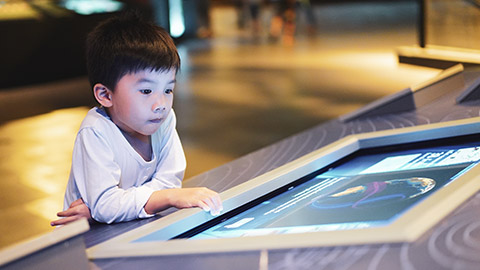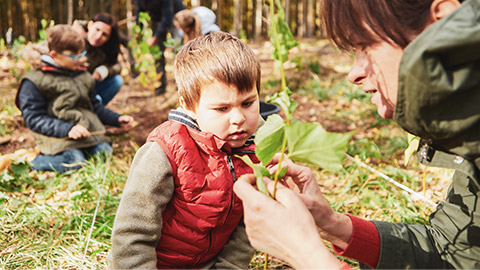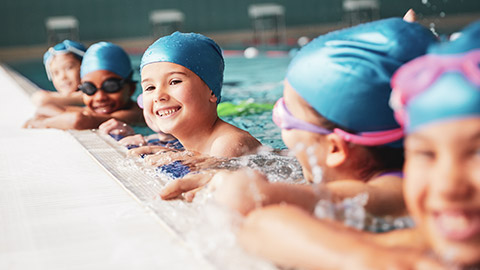Children's learning and development occur holistically, within the education and care service and their local and broader social and physical communities. Children's social communities start with their family and friends. Their physical community includes where they live, their activities, traditions, and events in their local and wider community. In this topic, we will explore how to support children to develop an understanding of their local community and the people who live there. We will also explore the strategies and their importance for supporting children's engagement with the community.
By the end of this topic, you will understand:
- Strategies for fostering children's connection with communities
- Community engagement opportunities
- Engaging families in their child's community involvement.
Children's education and care services are responsible for supporting children to be part of the broader community by learning about that community.
Services can engage in learning rituals to support children to learn about their community and its links to Aboriginal and Torres Strait Islander first nation people, such as acknowledgement of country and yarning circles.
Watch
Watch the following YouTube from Lifelong Learning Centres to learn about Acknowledgements of Country for Children: 'Children's Acknowledgement of Country' 1:11 minutes
Services can support children's learning about the community: As it is and as it was.
One way to support children's understanding of their community is to encourage them to make friends and participate in activities with other children. Educators can support children to gain an understanding of opportunities available in the local community, such as sporting events, local community events, children's groups, and community networks. Encouraging children to participate in the broader community allows them to meet new people and learn more about their community.
Another way to support children's understanding of their community is to help them learn about local landmarks and facilities. They should explore the physical landmarks and features that make up their community. This could include taking them on walks around the neighbourhood, visiting the local library or gallery, or even just chatting with them about what they see on their way to the service each day.

There are many opportunities for educators to support and foster children's engagement with the community, including but not limited to:
Excursions—Children can go on excursions to places within the community, such as:
- Local landmarks
- Parks and nature reserves
- Library
- Zoo
- Galleries such as an art and craft gallery
- Museums
- Sporting venues or experiences.
Incursions—Children can experience incursions when people visit the service, such as:
- Fire truck
- Police visits
- Dog safety visits
- Local elders or custodians of the land
- Local councillors or politicians
- Dance or sports demonstration.
Engagement with professionals from the community can occur by inviting parents to share information who have professions that are of interest to the children or by visiting a local baker to see how bread is made.
Learning projects can occur, such as visiting the local shopping centre to drop off the soft plastic recycling or visiting the local café to have gratitude tea.
Contributing to the community—for example, collecting items to donate to charities, collecting rubbish, or participating in a community re-vegetation project.
Case Study
Archer is a four-year-old who attends a service close to the city but lives outside this community about 40kms south. The Preschool room goes on community walks each week, and they track where they have been on a map. They discuss what they see and talk about old buildings, and the children point out where they live.
Archer has become interested in the mapping and mentioned to the educator that his house is not on the map because it is too far away.
The educator talks with the family and decides to print a larger map and track the drive they do in the mornings for Archer to share.
Then they take photos and show the class around the streets near his home. The parents are involved in this and help him to identify the landmarks near his home.
The discussion about community continues to explore the idea of culture, who lives in the community, and what makes up a community.
If the parents were not involved in this process, Archer's learning would not have been as rich.
They plan an excursion to the beach down the road from his house and drive past his place on the way home.
Activity 3A
Support Children's Connection with their Community
List three services you could connect your children and families to within your community. Describe how you would implement this connection.
- Outline the information you could display about this community group in your service.
- Explain the benefits this connection would have to children, families, and the community.
Ensure that you keep notes for future reference, as this information will support your assessment and professional practice.
For children, their connection with their local community is important. They can maintain a sense of belonging by engaging in community events and traditions. Additionally, participating in local community activities helps foster children's development of positive relationships with family and friends.
Children need to develop a connection with their local community. There are many ways to engage in community events and traditions. Families can participate in local community activities together. Friends can also introduce children to new activities and experiences in the community. Children can learn about different aspects of the community through these experiences. They can also develop a sense of belonging and pride in their community.
Community involvement builds children's interest in the world around them. Local community activities engage and teach children about different aspects of their community and help them learn how to be active and involved citizens.

Website
Read the ACECQA We Hear You Blog - It takes a village to raise a child: The role of community.
Here are some ways to engage children with their local community:
- Find out about local events - Festivals, fairs, parades, events at the local library and other community events to identify opportunities for children to learn about their community and become engaged in it.
- Volunteering opportunities - Find a local charity or non-profit organisation that welcomes volunteers, for example, a clean up the creek, local re-vegetation project, rubbish management in the neighbourhood, collecting cans of pet food for a local animal shelter. This is a great way for children to experience the importance of connection and helping others.
- Find out more about their community – Local landmarks and facilities, community groups; who are the First Nation people?
Activity 3B
Community Engagement
Thinking about the philosophy, policies and practices of a service (you can use Little.ly Early Education), explore how they support positive relationships between:
- The service, families and local schools?
- The service, families and community/support organisations?
What opportunities do children have to engage in their community beyond the service?
Ensure that you keep notes for future reference, as this information will support your assessment and professional practice.
Watch
Watch the following YouTube video from the Department of Education and Training, Victoria, to learn more about how community and learning go together: Community Engagement in Learning.

Engaging families in their children's exploration of the local community is important. Children can gain valuable insights into their community by involving parents in this process. Families can be invited to provide insights into their communities and networks and share these with the service. Inviting family and friends to explore the local community with children can help them learn more about their community and its resources. This informs families and encourages bonds, and builds understanding of their community. They can also be an important source of support for providers, especially when navigating local networks.
Child care providers can play a key role in helping families make these connections by providing information and support. Services can provide families with information about the local community, including services the families can learn about. This could be a brochure or a factsheet that outlines services in the service's local area that families can access. Information could include, for example, local toy or public libraries and their events, such as Story Time, NDIS services, where to get your car seats fitted, and local playgroups and sporting facilities. The publication can provide families with information such as who provides the service, what they do, how they offer it, the cost to families, who is eligible to use the service, and how you gain access to it.
By engaging families in children's connections with the social and physical community, childcare providers can create a richer learning environment for all. Involving families allows their wealth of experience and knowledge of the local community to be shared with providers.
Case Study
Harry's parents want their child to be aware of the physical landmarks and features that make up their community, positively influence the community, and consider different things they can do in their local community to contribute to its success.
A learning opportunity was developed that focused on exploring the local community. So, the educator arranged a community walk with the children. The children looked at a map of the area and then went on a short walk around the streets. Harry is quite interested in drawing, so a focus was to notice things in the streets that the children draw. The children had clipboards, paper and pencils and drew houses, parks and the local wetlands.
The next part of the experience was to think about things the children could do to help our community be an even better place. The children decided they wanted to put a rubbish bin out the front of the service to tell people to put their rubbish in it because they noticed lots of rubbish around the streets that should have been put in a rubbish bin. The educator invited Harry’s parents to visit the service, and the children shared their knowledge of the local area and showed them the drawings they had made. They talked about ideas to stop littering in the neighbourhood.
Activity 3C
Parents Involved in Community Learning
Explain why it is important for families to be involved in community learning by the children. Consider your local community and reflect on the following questions.
List three services you could connect your children and families to within your community. Describe how you would implement this connection.
Outline the information you could display about community groups in your service.
Explain the benefits this connection would have to children, families, and the community.
Ensure that you keep notes for future reference, as this information will support your assessment and professional practice.

